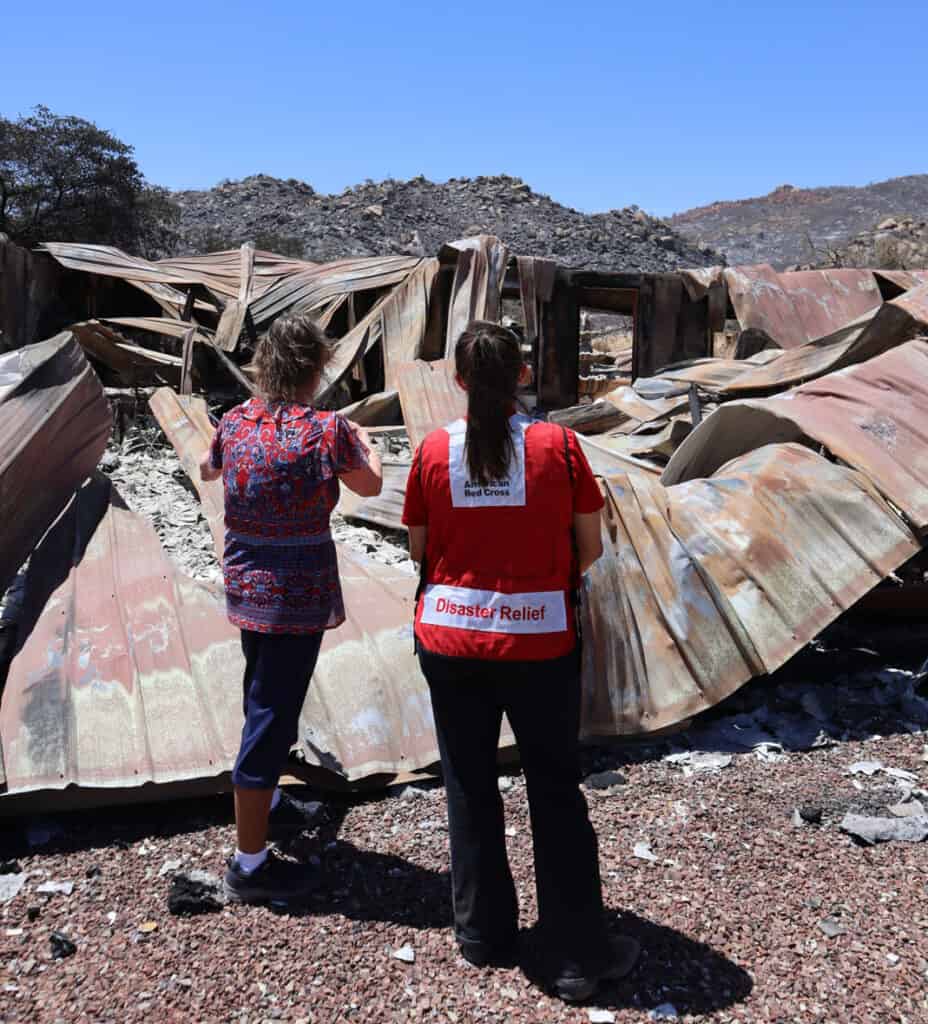
A Red Cross responder talks with a disaster victim. Photo submitted by American Red Cross Arizona
It happens once every few weeks. The Red Cross receives an emergency call from Winkleman or Mammoth, or some other part of the Copper Corridor. A home has caught fire and has been destroyed. A family of five is standing outside among piles of debris, on what had been their front lawn. Luckily, the fire department dispatcher has called 1-800-REDCROSS to request emergency assistance.
A team of Red Cross responders is mobilized within a few minutes of the initial call. Help is on the way. But more often than not, it may be another hour or more before Red Cross volunteers arrive on site. This is because the distance between Mammoth and the nearest available responder – who is dispatched directly from his or her home – can easily be almost one hundred miles. Considering the limited number of roads that lead in and out of the area, adverse weather conditions or heavy traffic anywhere along the way can further reduce the response time.
Such delays weigh heavily on the Red Cross, especially the volunteer responders, who are trained to provide immediate relief when disasters strike in cities and towns across Pinal County. It is a problem that arises every few years as local response volunteers age out of the system, move away, or migrate to other positions within the Red Cross. Similarly, at any point in time, volunteers may be temporarily out of commission due to illness, travel, or other commitments. This is a fixable problem, and the Red Cross is seeking the help of the community.
The best way for our communities to participate is to help us get the word out. Local organizations and clubs are invited to host Red Cross presentations as a public service. One or two hours is more than enough time for us to share the Red Cross response story with you, to field any questions or comments, and to assist interested members of the community in the process of signing up as a Red Cross volunteer.
When you take that first step toward response training with the Red Cross, you are taking an important step to becoming a valuable member of your community. You can help serve your community’s needs, on a flexible schedule, often without leaving home. Understand that most disaster responses will require that you visit the affected family, but that family can easily be a friend or neighbor, or a fellow member of a community organization, a church, or a club. You would be joining your own neighborhood’s support network.
The immediate question is “what is the commitment”? Your time is valuable and your priorities are for you to decide. All we ask is that you take a few hours of initial training and be available a few hours a month, at most, to respond to the victims of home fires. A single volunteer in each major town along the Copper Corridor is our immediate goal. That would be enough to respond to most incidents throughout the year. Your local presence would allow your displaced friends and neighbors to obtain more immediate assistance when they need it the most. Are you ready to be someone’s hero?
Questions, comments, or suggestions? Or thinking about volunteering? Drop me a line at joe.gruberman3@redcross.org.
Article was written by Joe Gruberman, Pinal County Community Volunteer Leader, Arizona and New Mexico Region of the American Red Cross.
